West Java Traditional House
West Java is one of the provinces in Indonesia which has several custom home special.
Traditional houses in the province of West Java contain symbols of community life.
Where in their lives they are known as friendly, polite, polite, unpretentious and optimistic people.
With these characteristics, traditional houses in West Java have high philosophical values that take them from their daily lives.
List of Traditional Houses in West Java
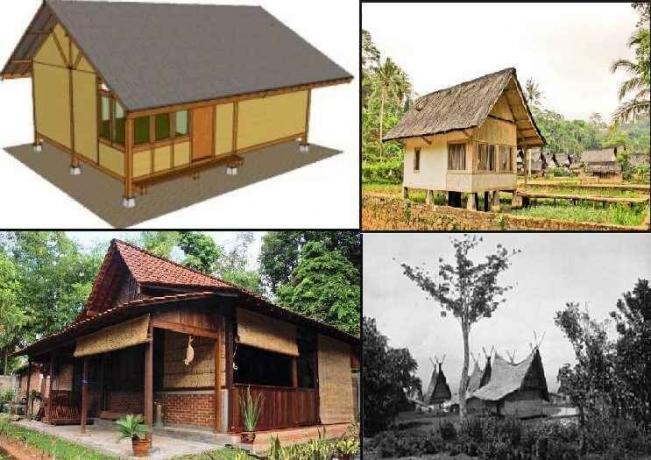
Every difference in traditional house models is of course motivated by differences in the tribes that inhabit the area.
Some of the tribes that inhabit West Java include the Baduy, Sundanese, Javanese, Betawi, and Cirebon tribes.
Although different, in general, every traditional house in West Java is useful as a place to live that emphasizes the cultural symbols of each tribe.
These cultural symbols are usually highlighted in the form of house architecture, patterns, and colors of traditional houses.
Here are 7 types of traditional houses in the province of West Java:
Table of contents
1. Imah Rhino Heuay
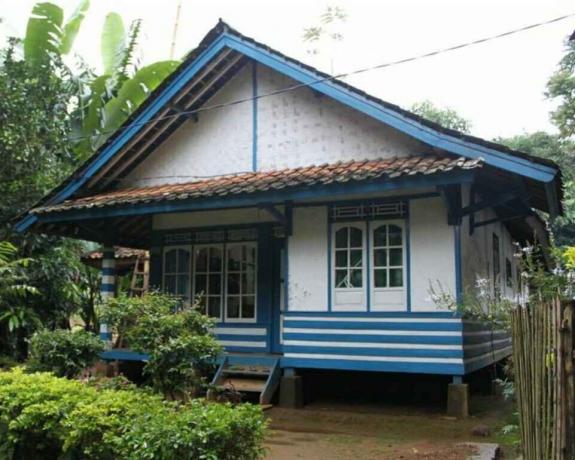
Badak Heuay is one of the traditional houses in West Java which has the meaning of a yawning rhino.
The hallmark of this traditional house can be seen on the roof, namely on the back roof to the wide open edge.
So that way, if we pay close attention, this traditional house is very similar to a yawning rhino.
The Badak Heuay traditional house contains a symbol of the personality of the people who are polite, friendly, and unpretentious.
Not only that, this house also symbolizes fertile, prosperous, and beautiful land.
We can still find the traditional house of the Badak Heuay easily in the rural areas of Sukabumi.
In fact, this traditional house model is still widely used as a residential house design for people who mix and match with a modern touch.
2. Imah Clamp Scissors
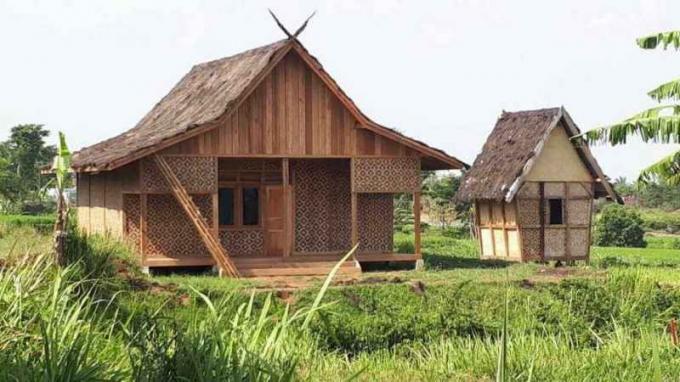
The traditional priesthood of Capit Gunting itself consists of two words, namely Capit and Gunting, which in Sundanese means: Clamp means taking something by clamping it, while scissors means a crossed knife.
The name "Capit Gunting" was taken because this house has a roof design that is shaped like "Capit Scissors".
Besides being called Imah Capit Gunting, this oldest traditional house in West Java also has another name, Susuhunan.
The design of Imah Capit Gunting is very simple, where the room consists of a terrace, living room, bedroom, and kitchen.
The shape of this traditional house as a whole is in the form of a rectangle that extends to the back.
This traditional house is often found in the Tasikmalaya area, even now it is still widely used as a government building design.
3. Imah Jolopong
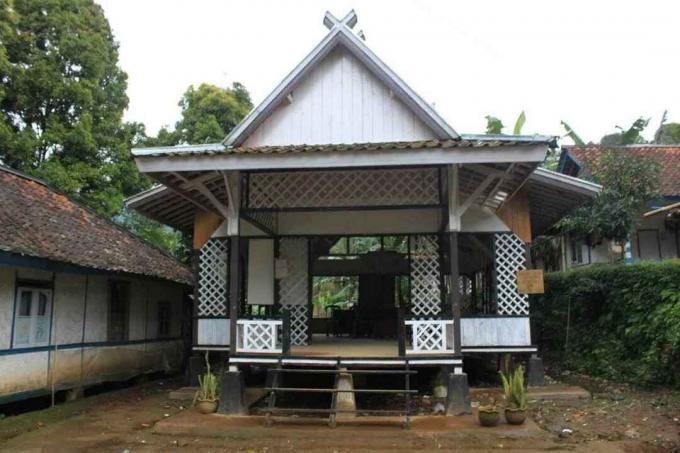
Imah Jolopong is the most popular traditional house in West Java.
Jolopong itself means drooping, the word was taken because the roof design of this house looks straight (drooping).
Apart from the roof which does not have any indentations and knick-knacks, the rooms are also very simple.
Where only consists of the emper (terrace), the middle of the imah (the living room of the house), the pankeh (the bedroom), and the pawon (the kitchen).
This traditional house from the Sundanese is still commonly found in rural areas in West Java.
Because this Jolopong house has a simple design so it's easy to make and doesn't cost much.
Besides being built in rural areas, this traditional house is also widely used as a government building design.
4. Imah Julang Ngapak
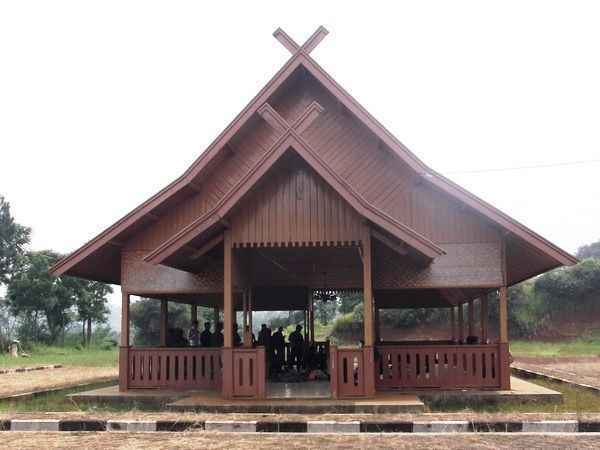
In Indonesian, Julang Ngapak means a bird that is flapping its wings.
The name was taken because the shape of the roof of this traditional house is similar to a bird flapping its wings.
Usually, the roof of the house is made of reeds, fibers, or thatch. All these materials are united in a roof frame made of bamboo.
Although the roof seems very simple, the Julang Ngapak traditional house is still safe from leaking when it rains.
Areas in West Java that still use a lot of traditional house designs are the Tasikmalaya and Kuningan areas.
In addition, you can also find this Julang Ngapak imah design in several buildings at the famous Indonesian campus, namely ITB.
5. Imah Parahu Kumureb
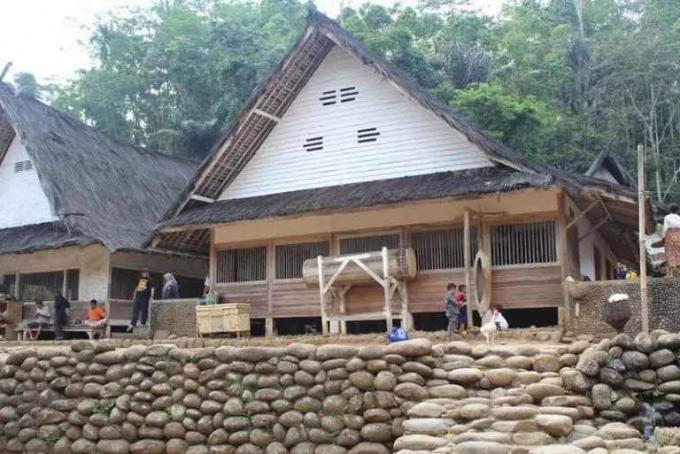
Next is Parahu Kumureb which is also known as the Tengkurep Boat.
The name was taken because the shape of this traditional house is very similar to the shape of an overturned boat.
This traditional house consists of four main parts, where the back and front are trapezoidal in shape, while the two sides are equilateral triangles.
Currently, the design of the Parahu Kumureb house is very rare because the design of this house is very easy to leak with the many connections on the roof.
However, in the villages in the Ciamis area of West Java, this traditional house can still be found.
6. Imah Tagog Dog
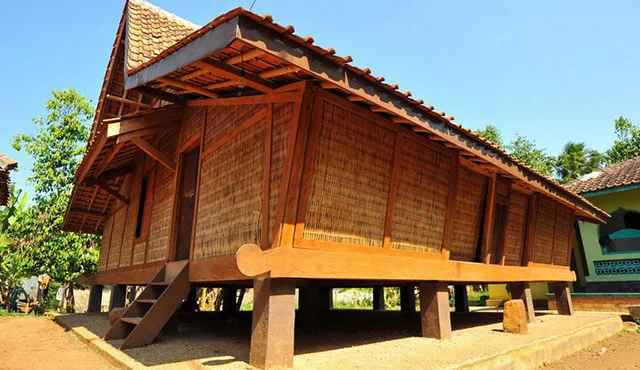
The traditional house of Tagog Dog means a sitting dog, because the design of this traditional house resembles the shape of a sitting dog.
This traditional house carries the design of a house on stilts but not too high, using some wood as a support
While the roof design of this traditional house has two parts of the roof that unite to form a triangle, while the other roof parts connect together at the front.
The connecting roof shape has the term soronday.
The function of the roof that connects to the front is used as a shade for the terrace.
Togog Dog traditional house design is widely used by people in the Garut area.
Not only used by Garut residents, nowadays there are also many hotels, rest areas, and restaurants in the Puncak area that use the roof design of this Togog Dog house.
7. Kasepuhan Traditional House
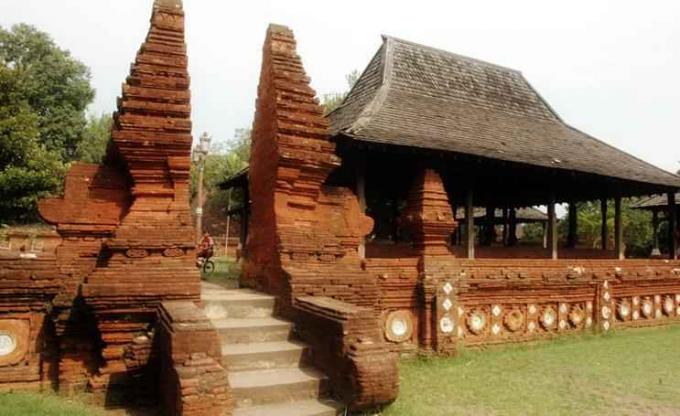
The last traditional house is the Kasepuhan custom, better known as the Kasepuhan Palace.
The traditional house of the Kasepuhan Palace was first built by Prince Cakrabuana in 1529.
Prince Cakrabuana is the biological son of King Siliwangi who comes from the Padjajaran Kingdom.
The Kasepuhan Palace itself includes a fairly large traditional house, which is divided into 3 parts, namely:
-
Main Gate
At the main gate, there are two gates which are located in the south and north of the Kasepuhan Palace complex.
Where the south door is named Lawang Sanga (door nine), and the northern door is named Kreteg Pangrawit (bridge). -
Pancaratna Building
This building is located on the left side of the front of the complex facing the west side.
This section serves as a place to face village or royal officials. This Paseban will later be received by Wedana or Demang. -
Pangrawit Building
The Pangrawit building is located to the left of the front of the complex with a position facing north.
This building is also known as Pancaniti which means five superiors or five eyes.
Conclusion
West Java province has 7 different traditional houses, each of which has a different design and meaning.
The seven traditional houses consist of Imah Badak Heuay, Imah Capit Gunting, Imah Jolopong, Imah Julang Ngapak, Imah Parahu Kumureb, Imah Togog Dog, and the traditional house of Kasepuhan.
